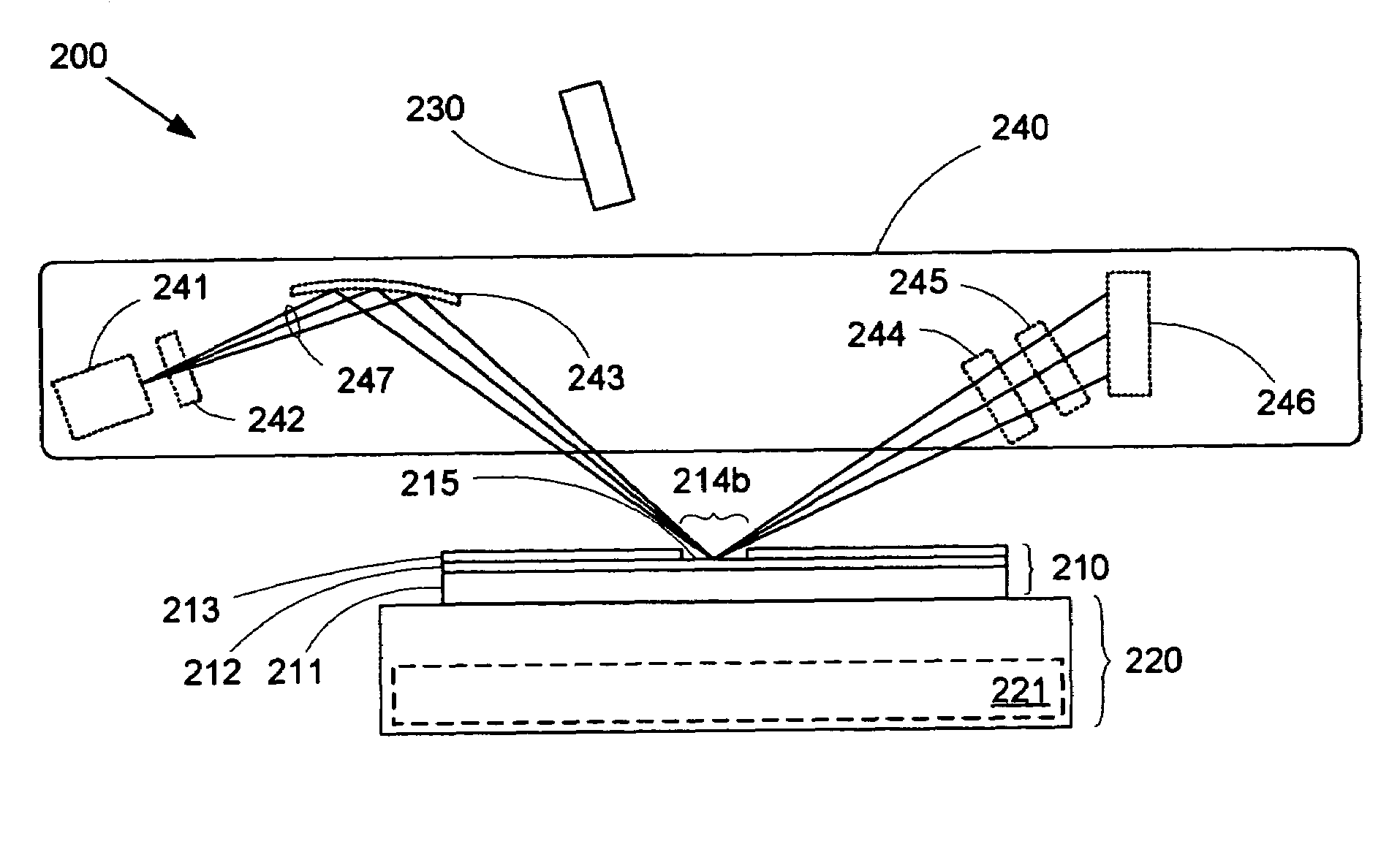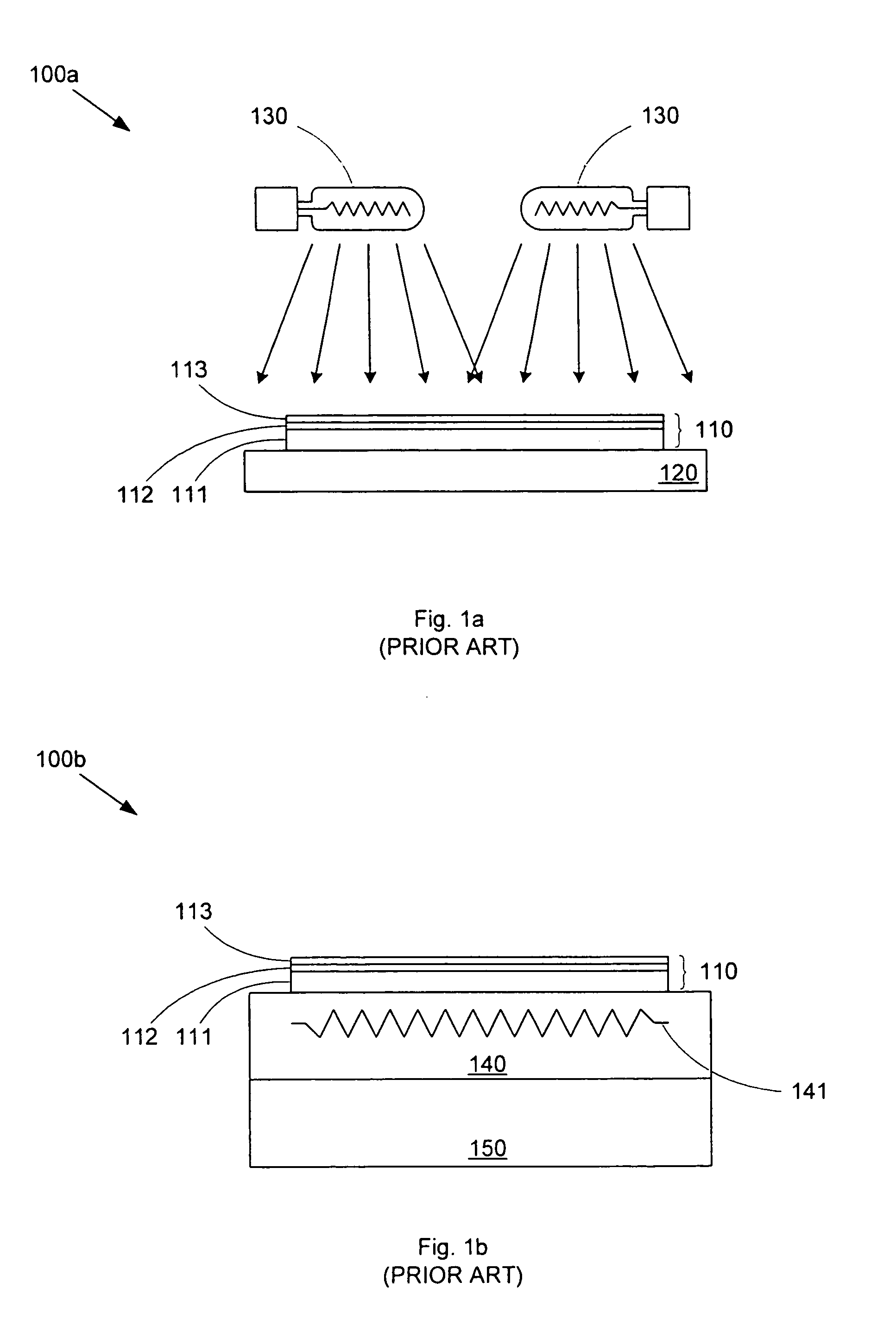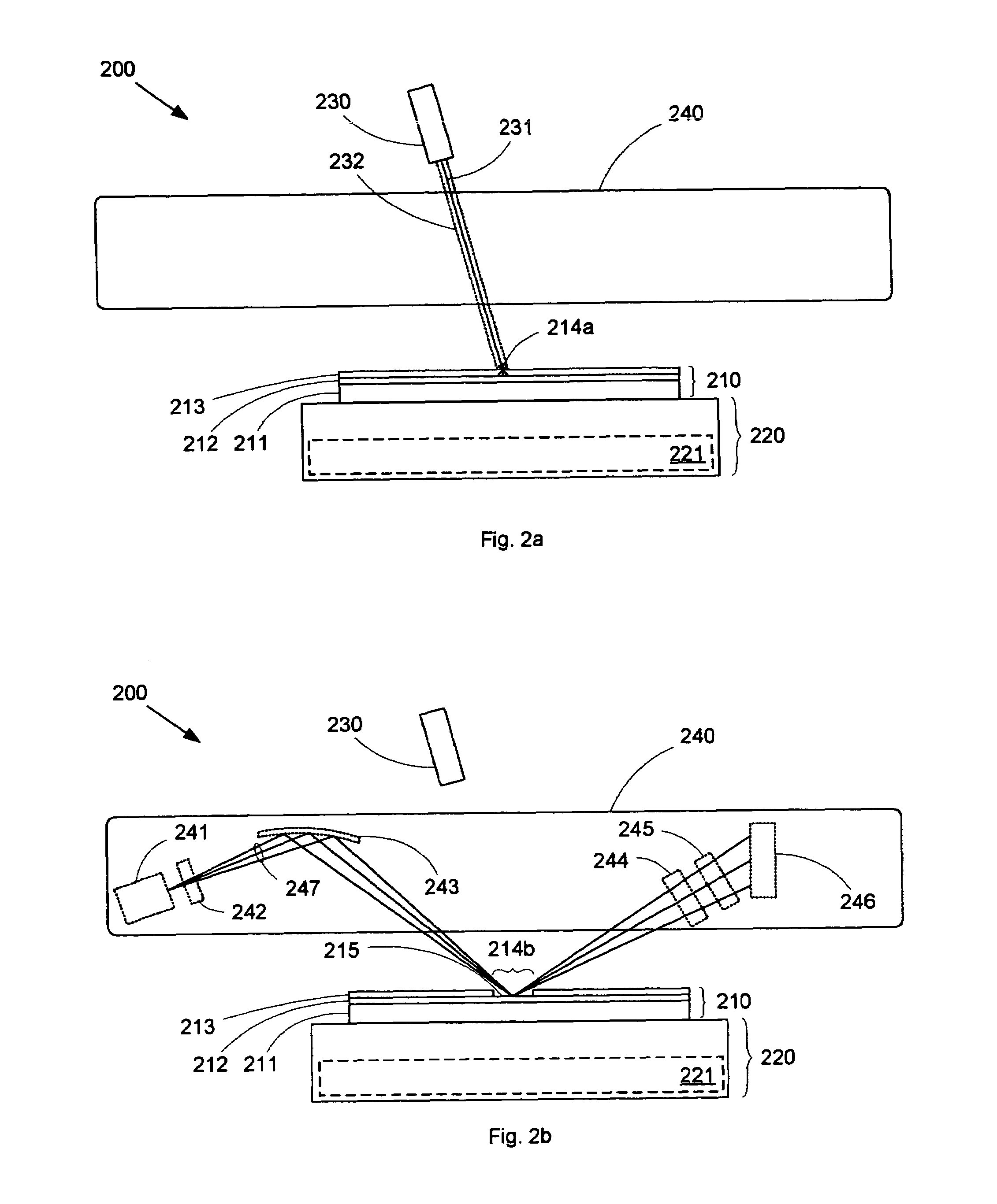Laser-based cleaning device for film analysis tool
a technology of film analysis and cleaning device, which is applied in the direction of radiation measurement, optical radiation measurement, photoelectric discharge tube, etc., can solve the problems of contaminant layer, adversely affecting the thin film analysis technique, and limited accuracy and reproducibility of thin film measurements, so as to eliminate any delay, minimize the total footprint, and accurate and repeatable analysis of thin film
- Summary
- Abstract
- Description
- Claims
- Application Information
AI Technical Summary
Benefits of technology
Problems solved by technology
Method used
Image
Examples
Embodiment Construction
[0021]FIG. 2a shows a thin film analysis system 200 in accordance with an embodiment of the present invention. Analysis system 200 comprises a stage 220, an energy beam source 230, and an analysis module 240. Stage 220 holds a test sample 210 that comprises a thin film layer 212 formed on a substrate 211. Substrate 211 can comprise any structure on which thin film layer 212 can be formed, including a single-layer structure (such as a silicon wafer) or a multi-layer structure (such as an additional thin film layer or layers formed on a silicon wafer). Test sample 210 also includes a contaminant layer 213 formed on the surface of thin film layer 212. Contaminant layer 213 can comprise any unwanted material on the surface of thin film layer 212.
[0022]An analysis operation performed using analysis system 200 actually comprises two steps—a cleaning operation and a measurement operation. During the cleaning operation, a small portion of contaminant layer 213 is removed. The exposed portio...
PUM
| Property | Measurement | Unit |
|---|---|---|
| temperature | aaaaa | aaaaa |
| thick | aaaaa | aaaaa |
| temperature | aaaaa | aaaaa |
Abstract
Description
Claims
Application Information
 Login to View More
Login to View More - R&D
- Intellectual Property
- Life Sciences
- Materials
- Tech Scout
- Unparalleled Data Quality
- Higher Quality Content
- 60% Fewer Hallucinations
Browse by: Latest US Patents, China's latest patents, Technical Efficacy Thesaurus, Application Domain, Technology Topic, Popular Technical Reports.
© 2025 PatSnap. All rights reserved.Legal|Privacy policy|Modern Slavery Act Transparency Statement|Sitemap|About US| Contact US: help@patsnap.com



